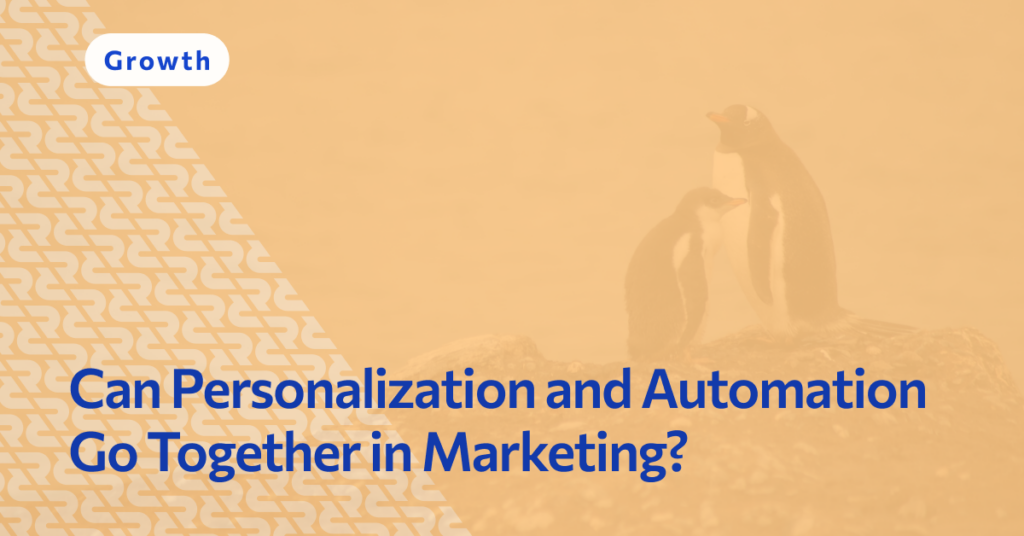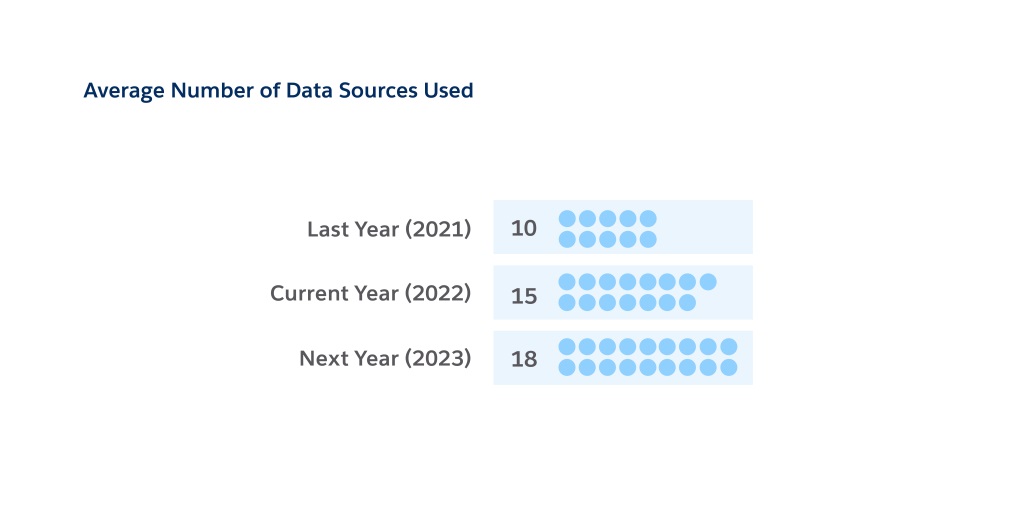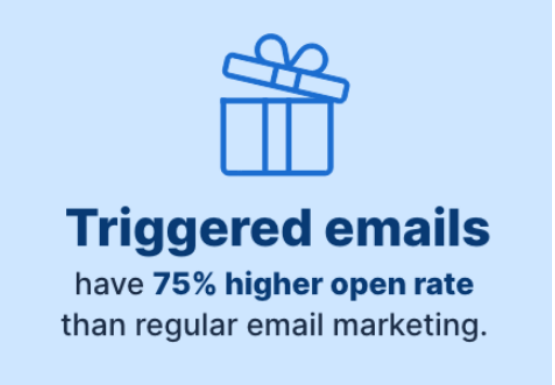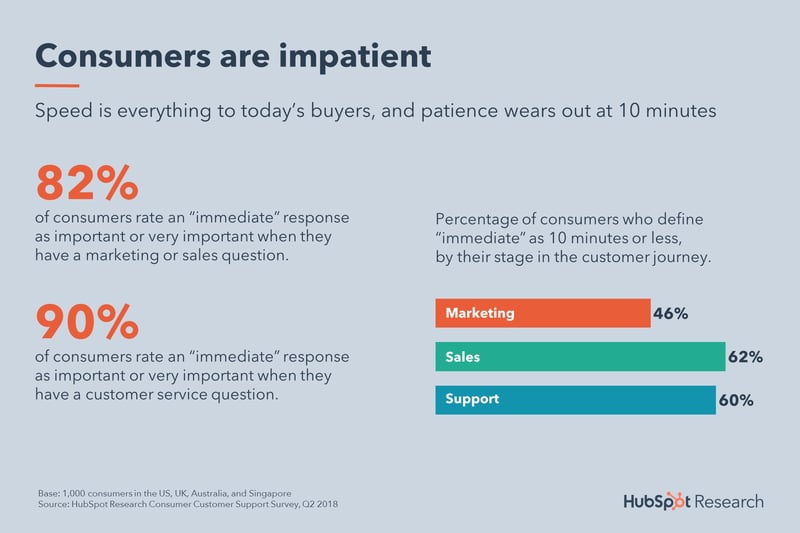Can Personalization and Automation Go Together in Marketing?

Can personalization and automation go together in your marketing strategy?
It’s a question clients ask us all the time—and we understand why. As automation technology becomes more advanced and totally integrated into the way brands communicate with customers, there seems to be a natural concern that some of the human element will be lost.
In other words: Marketing won’t be personal.
But we’re here to put your worries at ease. Personalization and automation can coexist in your marketing strategy, in fact, they should. Automation technology enhances the level and scale at which you’re able to personalize your outreach, allowing you to reach a wider audience without sacrificing quality.
In this article, we’ll explore how automation and personalization work together to engage new and potential customers, build stronger connections, and help you build and refine strategies that get bigger results for your business.
Quick Takeaways:
- Automation can enhance the level of personalization and human connection in marketing when harnessed the right way.
- Key personalization capabilities enabled by marketing automation include: streamlined data collection, the inclusion of personalized and dynamic content, and data analytics.
- It’s critical to maintain the right balance between automation and personalization by keeping in mind things like customer preferences and data privacy regulations.
- Marketing automation capabilities and personalization trends are continually evolving.
Personalization and Automation: What’s the Connection?
There’s a misconception that marketing automation is leading to the end of personalization—after all, isn’t the hallmark of personalization human connection? How can it be maintained using machines?
It’s a logical thought process, when you consider it. But it’s also a little bit doom-and-gloom. It’s true that modern marketers have to achieve the right balance of automation and personalization. But when they do, personalization can be greatly enhanced by automation tools, and achieved at a greater scale than is possible with traditional, manual approaches.
Let’s consider some of the specific reasons people see automation as a threat to personalized marketing:
- Loss of Human Touch: Traditional marketing, which relies heavily on manual processes, often involves a human touch. Marketers create content, make decisions based on intuition, and engage with customers on a more personal level. Automation, on the other hand, might seem robotic and devoid of emotion.
- Fear of Generic Messaging: Automated systems, if not configured correctly, can send out generic, one-size-fits-all messages that fail to resonate with individual customers. This can lead to the belief that automation sacrifices personalization in favor of mass communication.
- Concerns About Data Privacy: As automation tools collect and process vast amounts of customer data, there are concerns about data privacy and whether personal information is being used ethically and responsibly.
These are all valid concerns, and ones we’ll address in detail in the next section. But for now, we’ll just point out the one important aspect of marketing automation that demonstrates why personalization and automation go hand-in-hand:
Behind every marketing automation tool and strategy are real human marketers making decisions about how it’s being implemented. The execution may be automated, but the planning and strategy parts of the process still require human input.
Personalization and automation then, are harmonious—not conflicting. Let’s look at 9 specific ways that automation enhances personalization in modern marketing.
9 Ways Automation Enhances Personalization in Marketing
Data Collection and Analysis
The number of data sources marketers use to collect information about current and potential customers has nearly doubled in just two years, reaching nearly 20 channels by 2023.

Automation tools can gather data from these various sources, including customer behavior, preferences, demographics, and purchase history, at a scale that would be impossible to do manually. This data forms the foundation of modern marketing personalization efforts.
Segmenting and Targeting
Automation platforms use machine learning algorithms to segment customers based on their behavior and characteristics. These segments allow marketers to tailor their campaigns to specific customer groups effectively—something that can be applied to a variety of important channels, like email, social media, and PPC advertising.
Personalized Content and Outreach
Automation enables the creation of dynamic and personalized content, like product recommendations, email subject lines, and website content, all tailored to individual preferences and behaviors. This ensures that marketing messages are highly relevant to individual recipients.
Behavioral Triggers
Automation enables the setup of behavioral triggers that respond to customer actions in real-time. For example, if a customer abandons a shopping cart, an automated email reminder can be sent, prompting them to complete the purchase.
These types of emails, designed specifically to respond to user behavior and intent, have a 75% higher open rate than regular email marketing campaigns.

Personalized Email Campaigns
Marketing automation allows for the creation of personalized email campaigns that consider a recipient’s previous interactions with your brand. This results in higher open and conversion rates, and demonstrates that you care about delivering relevant content and brand experiences.
A/B Testing
Automation tools often include A/B testing features that help marketers optimize personalization efforts. By testing different variations of content, subject lines, and calls to action, you can continually refine your approach for better results.
Customer Journey Mapping
Automation software can help you map out the entire customer journey and automate touch points along the way. This ensures that customers receive relevant messages and offers at every stage of their buyer and customer journeys.
Predictive Analytics
Some automation tools use predictive analytics to forecast customer behavior. This data is invaluable for proactively personalizing marketing efforts, such as offering discounts to customers likely to churn.
Responsive Customer Support
Automation can enhance personalized customer support through the use of chatbots and AI-powered assistants. These tools can answer customer inquiries and provide recommendations based on individual needs, ensuring a more tailored support experience.
For brands today, this level of automation-driven personalization as it relates to customer support can be the difference between winning customers and losing them to competitors. According to HubSpot, 82% of consumers now want an immediate response when they have a marketing or sales question.

Achieving the Right Balance
While automation and personalization can work together to deliver compelling marketing experiences, finding the right balance is crucial. Automation without oversight can result in generic or impersonal interactions, while excessive personalization ends up being too time-consuming and resource intensive.
Here are some key considerations for achieving the right balance:
- Data Privacy and Compliance: Personalization efforts should always respect customer privacy and adhere to relevant data protection regulations, such as CAN-SPAM and GDPR. Automation should always include mechanisms for obtaining and managing customer consent.
- Customer Preferences: Not all customers want the same level of personalization. Some may appreciate highly-tailored experiences, while others may prefer a more hands-off approach. Marketers should allow customers to control the extent of personalization they receive.
- Testing and Optimization: Continuously monitor and optimize your personalization efforts. Use data and feedback to refine your strategies, ensuring that the level of automation and personalization aligns with customer expectations and business goals.
- Human Touch: While automation can streamline processes, don’t forget the importance of human insight. Your Personalization shouldn’t eliminate the opportunity for genuine human interaction and customer service when it’s needed.
Final Thoughts
There’s much to already keep in mind when it comes to personalization and automation, and how to get it right in your marketing strategy. Still, trends and technologies are changing all the time. It’s important to stay on top of new capabilities, customer expectations, and competitive opportunities related to your personalized marketing efforts.
At RevBoss, we can help you take a best-of-both-worlds approach. We help clients execute outbound marketing campaigns that are data-driven and rooted in modern automation, while also fully attuned to customer fit, preferences, behaviors, and intent.
Our outbound email and lead-gen services are custom-built for startups, consultancies, marketing agencies, and other B2B organizations.
Schedule a quick call with us to learn more and get started.
